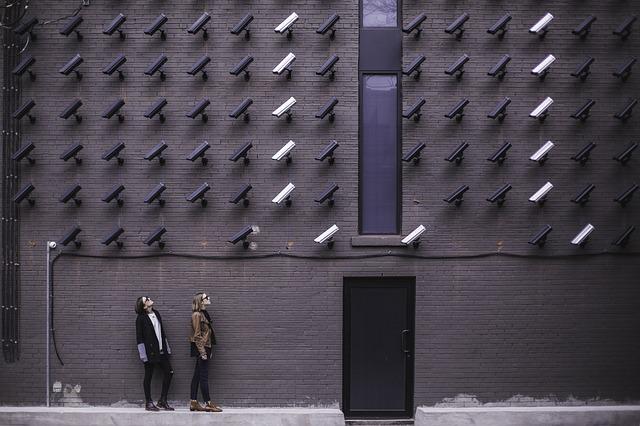
SimpliSafe smart locks will make your home more secure. It is designed to discourage intruders by using a keyless design and a key fob, keypad, or smartphone to control it. It can be controlled with your voice, and is compatible with many smart home devices. It can also send you notifications when your door has been locked or unlocked for added security.
How to calibrate the simplisafe smartlock
Calibrating your Simplisafe smartlock may be necessary if it is acting up in recent months. The good news is that you can do so without any difficulty, provided you follow a few guidelines and follow the manufacturer's instructions. First, remove the battery pack from your Simplisafe smartlock. To do this, slide the sensor's backcover up and unscrew the battery release plate. Then replace the battery.
Next, move the lock to its end position by turning it and then selecting Done. Then, the smart lock will ask if it has an entry sensor. Select OK if it has one.

How to reset your simplisafe smart lock
SimpliSafe smart locks may not respond to your commands. You can do this by holding down the power button for around 20 seconds. You will then see a green light indicating that the lock has been reset. The battery may need to be changed. To replace the battery, you need to slide the sensor up from the wall and release the battery release holder. You can then reconnect the sensor to the wall once it is back in the correct place. Once you have installed the new batteries, the lock will be operational again.
SimpliSafe smart locks problems can be caused by many things. The most common cause is a low battery, or batteries that have been removed or damaged. A problem with your internet connection may also cause the SimpliSafe lock to not communicate with the SimpliSafe system. Contact customer support to request a replacement.
How to pair the simplisafe smart lock and your phone
First, pair the SimpliSafe smartlock to your phone via WiFi. Open the SimpliSafe app, and navigate to "My Home". Next, tap "Lock" and you will see the status. If the keypad does not work, please check the batteries. If the light continues to turn on, the lock works properly.
Make sure the devices are within a few feet of each other. Once you pair the lock, you can test its functionality by unlocking and locking it with the PIN.

How to reset a dead Keypad
There may be a problem with your SimpliSafe smartlock keypad. You can reset your SimpliSafe smart lock keypad in this case by following these simple steps. Make sure that your lock has been paired with the Wi-Fi network. Next, open SimpliSafe and navigate to the Lock panel. There, you should see a battery icon and check whether the battery level is low. If the battery level is low, you can put a new one in. Once you've done this, you should be able to confirm that the issue is fixed. If the problem continues, you can update the firmware.
It is also possible to disconnect the SimpliSafe Keypad from the detectors and batteries. After removing the SimpliSafe from your wall, you may need to wait for the keypad to be reconnected.
FAQ
Alarm monitoring: How much should I spend?
Alarm monitoring costs vary depending on how often you want it monitored, what kind of equipment you need, and whether you are looking at an all-inclusive package or just one monthly fee.
Which home security systems has the greatest number of features?
The Ring Video Doorbell Pro has the most features out of all thehome security systems we reviewed. It lets you see who's at your door, talk to them through your phone, and even record videos. It also comes with free cloud storage so that you can store any recordings.
Can ADT be hacked
ADT security is the oldest home alarm system available. Many consumers still consider ADT Home Security System to be the safest choice. They trust its reputation as a reliable company committed to protecting their homes from fires and burglary.
Like all things, hackers can attack even the most trustworthy organizations. Hackers can infiltrate a network at any time and steal sensitive data. Hackers can gain access to all data on your network and the ability to modify important settings. A hacker can delete files, modify passwords or shut down an entire computer system. It is important to realize that hackers may not be able to see your files or access your home. Make sure you have the right information to help protect your system.
Statistics
- (In my experience, the discount on my home insurance covered about 25 percent of the subscription of an average plan, but your mileage may vary depending on your location and the size of your home.) (theverge.com)
- Cove sets you free without punishing penalties and fees, unlike other security solutions that charge 75% to 100% of your remaining contract. (safewise.com)
- Unlike other online safety services that charge up to 100 percent of your monthly fee, Cove charges no upfront fees and has no hidden costs.
- Related questionsHome security systems that are 100% DIY (safewise.com)
External Links
How To
How to Install an Home Security System
A home security system monitors your property and alerts if there is any activity. It could be motion sensors, doorbell cameras, smoke detectors or burglar alarms. A home security system is usually composed of one or several sensors (e.g. motion detectors), that send signals when there's movement or sound. The signals are then sent to a control panel where they're monitored and recorded. The control panel will send an alert to your smartphone, tablet, computer or voice assistant if there is a problem, such as someone breaking into your home. The control panel will notify you immediately so that you can take corrective action.
It is important to choose the right type and size of sensors to fit your home before installing a security system. There are two main types of sensors: passive and active. Passive sensors don't require batteries; they just pick up sounds and vibrations from their surroundings. They can be doorbells or sirens as well as buzzers. Active sensors transmit data by using electricity. Examples of such sensors include cameras and motion sensor.
There are many types of sensors on the market today. Each brand comes with its own pros and cons. Some sensors are waterproof, others are not. Some include built-in speakers to allow you hear them even when they are outside. Some only work indoors. Some of these are very basic, while others have advanced features such night vision.
After you have decided on the best sensors for your property's needs, you will need to choose a manufacturer. This will make sure that your sensors function well together. There should be many options at your local hardware store.
Once you've chosen a brand of sensors, you'll need to decide how many you want to buy. Depending upon whether they live alone or in a group, most people begin with one or two sensors. You may want to consider purchasing more sensors in the future if possible.
Next, decide where you want the sensors to go. Are you looking for them to be near doors or windows? Do you prefer to keep them away? Before you put them anywhere on your property make sure you get permission. It is important to ensure they do not interfere with electrical outlets.
Now that you know the exact location of your sensors you will need a connection to your control board. A power adapter or battery package may be required depending on your setup. Once you have everything in place, your property can be monitored!